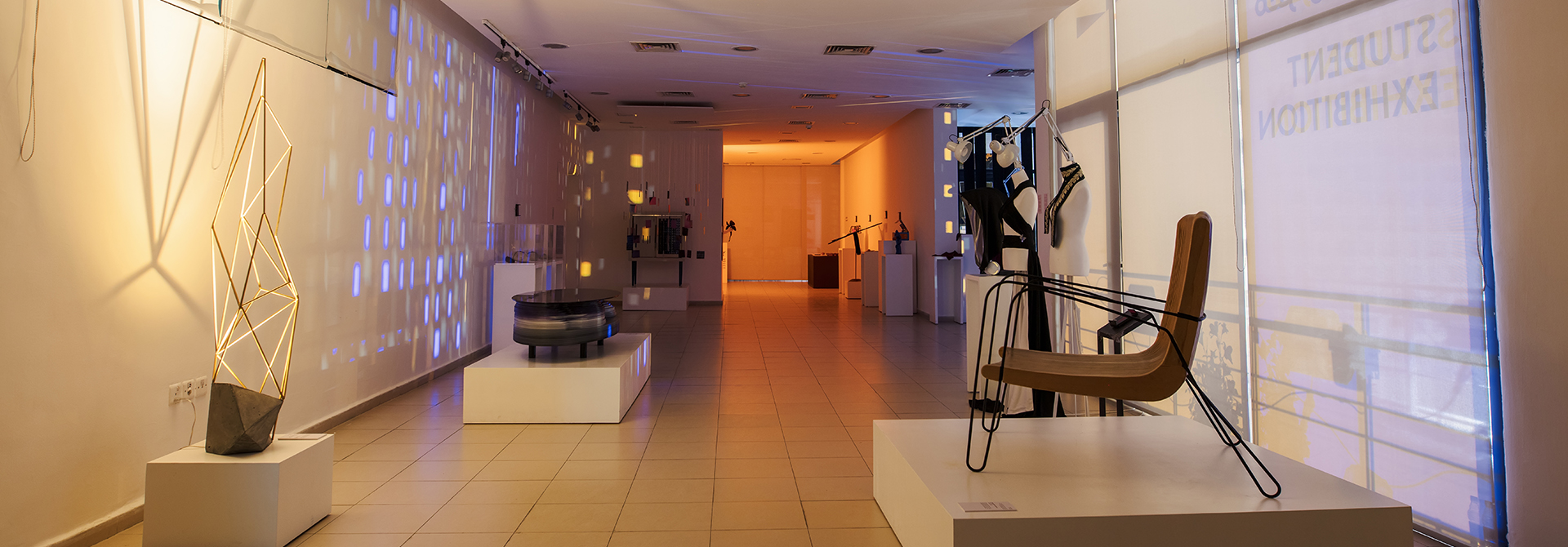

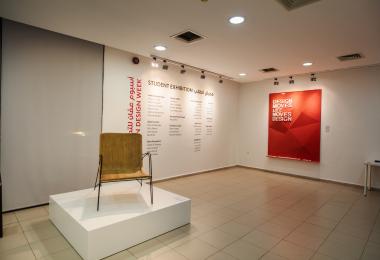
Student Exhibition
The entrance of the 2017 Student Exhibition at the Ras El Ain Gallery
© Amman Design Week 2017
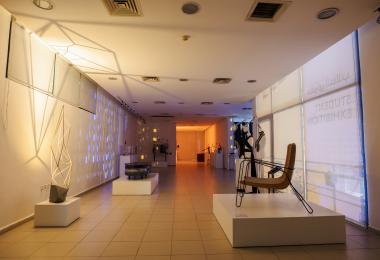
Student Exhibition
The entrance of the 2017 Student Exhibition at the Ras El Ain Gallery
© Amman Design Week 2017
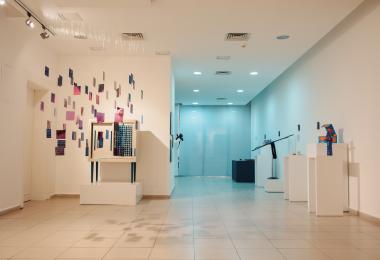
Student Exhibition
Various works done by students as a result of a six month mentorship program, showcased at the Student Exhibition at the Ras El Ain Gallery.
© Amman Design Week 2017
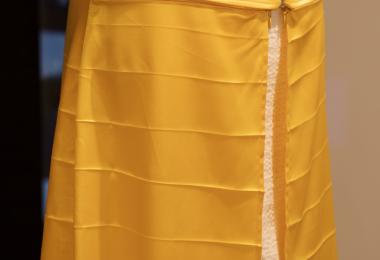
Portable Growth
Safya al Barghouthi
Inspired by the ‘Veiled Lady’ Mushroom, an organism that adapts its shape to its environment and features a skirt-like veil, Safia experimented with pleats and yellow silk satin to create a transformable belt that unfolds into a pleated open-slit skirt.
Mentored by Edelina Joyce Issa.
© Amman Design Week 2017
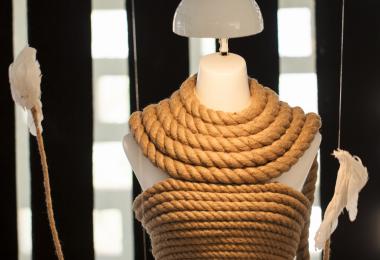
Peace
Nasma Ihsan
Beginning with the concept of a corset as a starting point for her design, Nasma used ropes of various sizes and strengths instead of fabric. The design was inspired by human rights activist Nadia Murad, who was nominated for a Nobel Peace Prize in 2016 for her important role in speaking out against human trafficking, and advocating for and defending the rights of women.
The birds at the end of the ropes signify being released from chains, representing a sense of freedom.
Mentored by Edelina Joyce Issa.
© Amman Design Week 2017
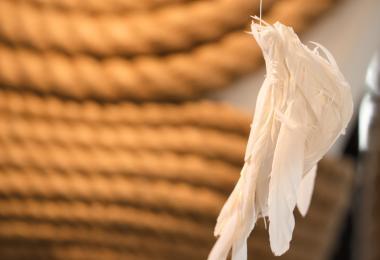
Peace
Nasma Ihsan
Beginning with the concept of a corset as a starting point for her design, Nasma used ropes of various sizes and strengths instead of fabric. The design was inspired by human rights activist Nadia Murad, who was nominated for a Nobel Peace Prize in 2016 for her important role in speaking out against human trafficking, and advocating for and defending the rights of women.
The birds at the end of the ropes signify being released from chains, representing a sense of freedom.
Mentored by Edelina Joyce Issa.
© Amman Design Week 2017
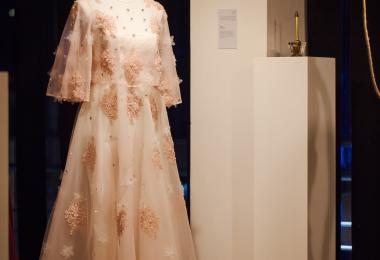
Spring
Lamees Ghazallah
Lamees reinterpreted 1960s bridal wear into a modern-day gown, taking inspiration from the flowers that bloom during a Jordanian spring. Flowers and scents are incorporated within her garment, while also creating a transferable scent spraying product.
Mentored by Edelina Joyce Issa.
© Amman Design Week 2017
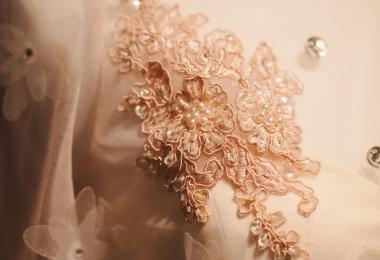
Spring
Lamees Ghazallah
Lamees reinterpreted 1960s bridal wear into a modern-day gown, taking inspiration from the flowers that bloom during a Jordanian spring. Flowers and scents are incorporated within her garment, while also creating a transferable scent spraying product.
Mentored by Edelina Joyce Issa.
© Amman Design Week 2017
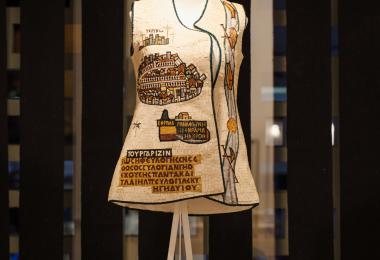
Mapped Gilet
Hiba Mubaideen
Hiba recreated a vintage Christian Dior waistcoat with a local touch, using iconic mosaics of ancient historical sites to create a garment featuring a unique form of surface decoration.
The gilet is covered in a mosaic that replicates Madaba’s map of ancient holy sites. The process of creating the gilet took over a month, as the mosaic makers had to customize each stone’s cut as per Hiba’s design and layer them on several pieces of fabric. The frontside of the coat features Jerusalem, Karak, Bethlehem and the Jordan River which winds to the backside. There the mosaic features the Dead Sea, Gaza on the bottom left corner, Mount Sinai in the middle, and the Sinai Peninsula on the bottom right.
It was made with the help of mosaic artisans from Nebo’s Pearl in Madaba.
Mentored by Edelina Joyce Issa.
© Amman Design Week 2017
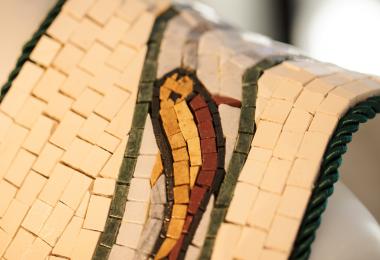
Mapped Gilet
Hiba Mubaideen
Hiba recreated a vintage Christian Dior waistcoat with a local touch, using iconic mosaics of ancient historical sites to create a garment featuring a unique form of surface decoration.
The gilet is covered in a mosaic that replicates Madaba’s map of ancient holy sites. The process of creating the gilet took over a month, as the mosaic makers had to customize each stone’s cut as per Hiba’s design and layer them on several pieces of fabric. The frontside of the coat features Jerusalem, Karak, Bethlehem and the Jordan River which winds to the backside. There the mosaic features the Dead Sea, Gaza on the bottom left corner, Mount Sinai in the middle, and the Sinai Peninsula on the bottom right.
It was made with the help of mosaic artisans from Nebo’s Pearl in Madaba.
Mentored by Edelina Joyce Issa.
© Amman Design Week 2017
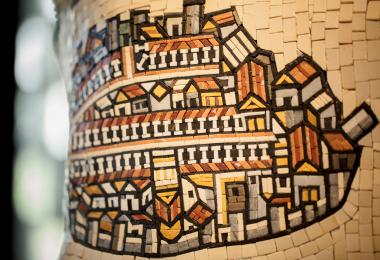
Mapped Gilet
Hiba Mubaideen
Hiba recreated a vintage Christian Dior waistcoat with a local touch, using iconic mosaics of ancient historical sites to create a garment featuring a unique form of surface decoration.
The gilet is covered in a mosaic that replicates Madaba’s map of ancient holy sites. The process of creating the gilet took over a month, as the mosaic makers had to customize each stone’s cut as per Hiba’s design and layer them on several pieces of fabric. The frontside of the coat features Jerusalem, Karak, Bethlehem and the Jordan River which winds to the backside. There the mosaic features the Dead Sea, Gaza on the bottom left corner, Mount Sinai in the middle, and the Sinai Peninsula on the bottom right.
It was made with the help of mosaic artisans from Nebo’s Pearl in Madaba.
Mentored by Edelina Joyce Issa.
© Amman Design Week 2017
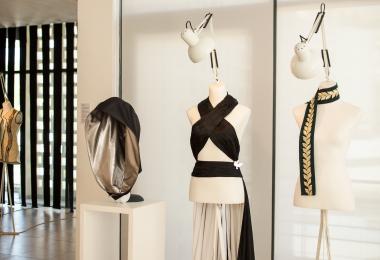
Women of Arabia
Hala Al Zoubidi
As a tribute to three women who Hala deems have left an imprint on the world through their achievements, Hala designed three fashion pieces, deemed to be symbolic representations.
The Queen’s Belt
The piece designed to represent Her Majesty Queen Rania Al Abdullah features a double-sided fabric that wraps around the body like a belt; the white side representing motherhood, and the black side representing strength.
The Zaha Hood
In honor of Zaha Hadid, Hala designed a hood made from silk chiffon that can also be used more practically as a shoulder bag. The piece represents Zaha’s vision and her steadfastness despite criticism, with the silver color on the inside of the hood representing Zaha’s determination to live in her own world.
The Golden Capsule and the Leaves
For Ghada Almutairi, an inventor and professor of pharmaceutical chemistry, Hala designed a thin scarf embroidered with laurel leaves. The scarf can be carried around inside a golden colored capsule, made from metal.
Mentored by Edelina Joyce Issa.
© Amman Design Week 2017
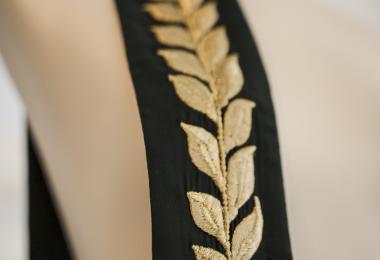
Women of Arabia
Hala Al Zoubidi
The piece designed to represent Her Majesty Queen Rania Al Abdullah features a double-sided fabric that wraps around the body like a belt; the white side representing motherhood, and the black side representing strength.
Mentored by Edelina Joyce Issa.
© Amman Design Week 2017
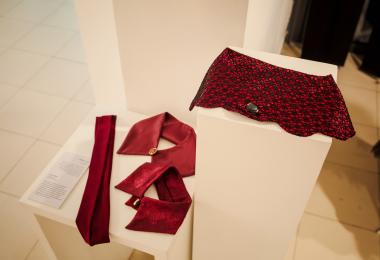
Lost in Time
Hala Hammad
Hala’s design is inspired by her grandmother’s memory of a dress she once loved and lost. Working with only her grandmother’s description of the dress and its details, Hala created her own interpretation; a dress that pays homage to 1950s fashion while also maintaining a contemporary feel. The dress is made of a maroon-colored polyester crepe material, similar to the fabric used in fashion during those times.
Mentored by Edelina Joyce Issa.
© Amman Design Week 2017
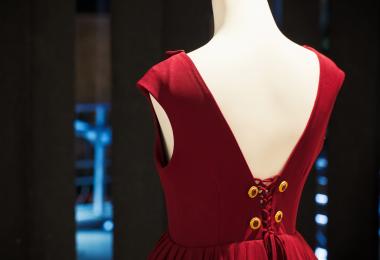
Lost in Time
Hala Hammad
Hala’s design is inspired by her grandmother’s memory of a dress she once loved and lost. Working with only her grandmother’s description of the dress and its details, Hala created her own interpretation; a dress that pays homage to 1950s fashion while also maintaining a contemporary feel. The dress is made of a maroon-colored polyester crepe material, similar to the fabric used in fashion during those times.
Mentored by Edelina Joyce Issa.
© Amman Design Week 2017
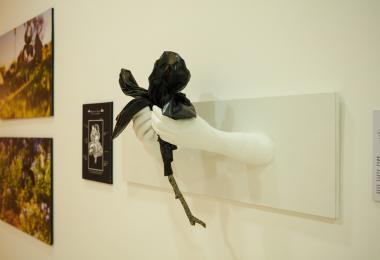
Unnatural Nature: The Unfortunate Black Iris
Sama Zou’bi
Sama designed a replica of Jordan’s national flower, the Black Iris, out of black plastic waste bags. Her project represents the severity of the societal and environmental littering and pollution problems in Jordan.
Mentored by Dina Fawakhiri.
© Amman Design Week 2017
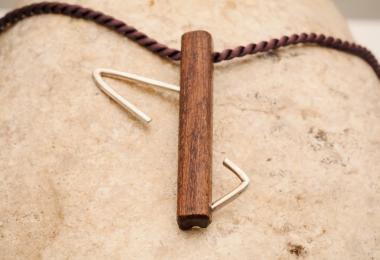
Heritage Traces
Lubna Al-Mousa, Shaker Nsour
These jewelry designs were inspired from traditional, physical movements in Jordanian culture and heritage. Using local materials, each necklace tells a story about how our ancestors lived. The materials used in the designs correspond to the inspiration behind each necklace.
Mentored by Dina Fawakhiri.
© Amman Design Week 2017
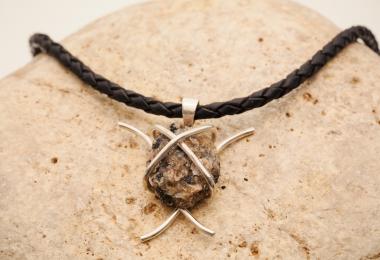
Heritage Traces
Lubna Al-Mousa, Shaker Nsour
These jewelry designs were inspired from traditional, physical movements in Jordanian culture and heritage. Using local materials, each necklace tells a story about how our ancestors lived. The materials used in the designs correspond to the inspiration behind each necklace.
Mentored by Dina Fawakhiri.
© Amman Design Week 2017
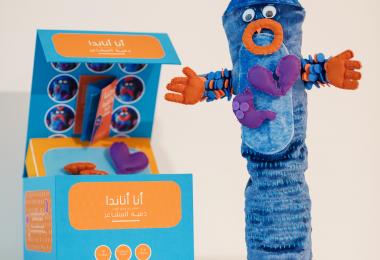
Play Therapy Puppet
Lena Hussein
Lena created a play therapy puppet that helps children express how they feel internally (chest pains, breathing difficulties, heart attack symptoms, low energy, heart pounding, hyperventilation, sore muscles, etc), which will aid child therapists in identifying and treating anxiety in children.
Mentored by Dina Fawakhiri.
© Amman Design Week 2017
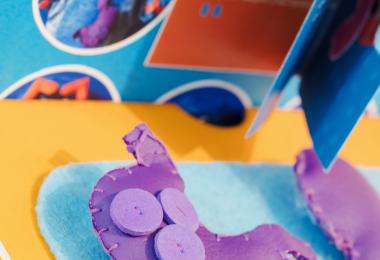
Play Therapy Puppet
Lena Hussein
Lena created a play therapy puppet that helps children express how they feel internally (chest pains, breathing difficulties, heart attack symptoms, low energy, heart pounding, hyperventilation, sore muscles, etc), which will aid child therapists in identifying and treating anxiety in children.
Mentored by Dina Fawakhiri.
© Amman Design Week 2017
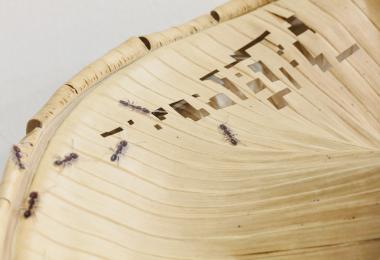
Wasp
Riyad Hilal
Under the mentorship of Ammar Khammash, Riyad’s project is a speculation on the ability of insects to etch forms on leaves. The project aims to explore ways of changing the behavior of insects to carry out tasks they have never done before, and to execute intricately detailed designs based on human instruction.
Mentored by Ammar Khammash.
© Amman Design Week 2017
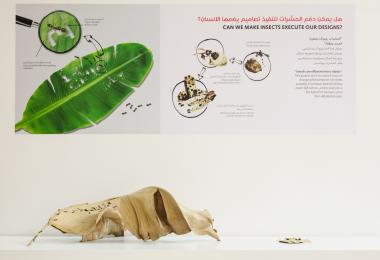
Wasp
Riyad Hilal
Under the mentorship of Ammar Khammash, Riyad’s project is a speculation on the ability of insects to etch forms on leaves. The project aims to explore ways of changing the behavior of insects to carry out tasks they have never done before, and to execute intricately detailed designs based on human instruction.
Mentored by Ammar Khammash.
© Amman Design Week 2017
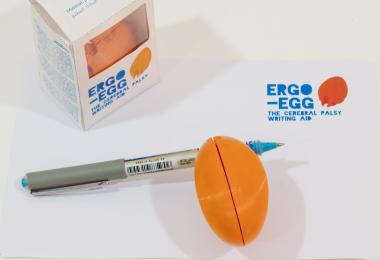
ErgoEgg
Leen Khasawneh
Leen designed and created a 3D printed ergonomic writing tool to serve as a communication aid for children with cerebral palsy, allowing the insertion of a pen or pencil. The aim of the product is to be the first locally available product tailored to children with cerebral palsy, and to be one of the few effective cerebral palsy products worldwide.
Leen Khasawneh was the winner of the Student Prize at Amman Design Week 2017.
Mentored by Nada Jaffal.
© Amman Design Week 2017
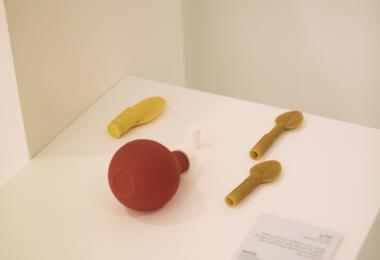
MUSHI
Kareem Khalil
Kareem developed a design solution for parents who struggle with feeding their infants or toddlers (6 - 24 months old). MUSHI aims to provide users with a handheld tool that acts as a manual on-the-go food grinder and feeder.
Mentored by Nada Jaffal.
© Amman Design Week 2017
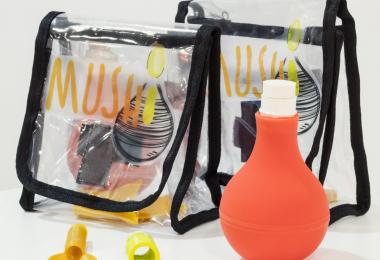
MUSHI
Kareem Khalil
Kareem developed a design solution for parents who struggle with feeding their infants or toddlers (6 - 24 months old). MUSHI aims to provide users with a handheld tool that acts as a manual on-the-go food grinder and feeder.
Mentored by Nada Jaffal.
© Amman Design Week 2017
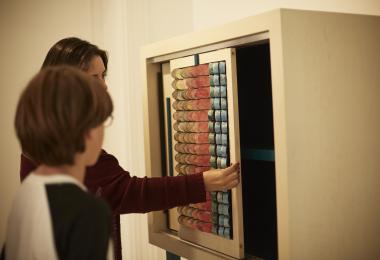
Modern Namliyeh
Dana Sadeddin
Dana designed a cabinet, made from maple wood, inspired by the fish in the sea and the movement of their scales.
Mentored by Nada Jaffal.
© Amman Design Week 2017
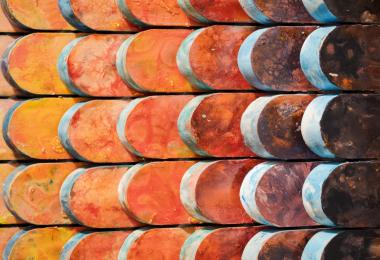
Modern Namliyeh
Dana Sadeddin
Dana designed a cabinet, made from maple wood, inspired by the fish in the sea and the movement of their scales.
Mentored by Nada Jaffal.
© Amman Design Week 2017
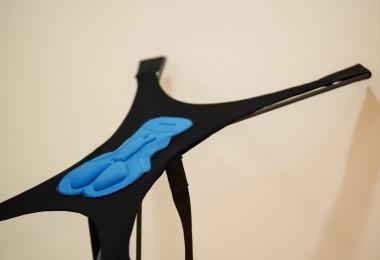
Strap’D
Azd Billeh
Concerned about the quality of life of pregnant dogs, Azd designed a wearable strap which addresses the issue of miscarriage with pregnant dogs by providing a solution for their discomfort and pain. By integrating the principles of compression and tension forces, the strap helps dogs relieve the weight they are carrying on their backs during pregnancy.
The bottom of the design, to be worn around the dog’s stomach, features gel-padding to increase the dog's’ sense of comfort, and lycra for elasticity, decreasing the dog’s stress and anxiety levels during pregnancy. The design then wraps around the dog with an adjustable velcro buckle, which allows for adjustability during application, and can fit a variety of sizes. The leg and arm openings are made from elastic, in order to achieve balanced weight distribution throughout pregnancy.
Mentored by Nada Jaffal.
© Amman Design Week 2017
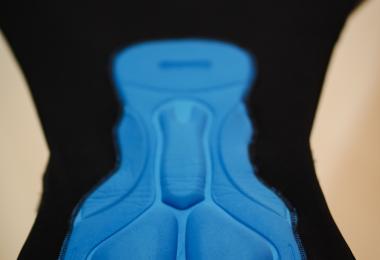
Strap’D
Azd Billeh
Concerned about the quality of life of pregnant dogs, Azd designed a wearable strap which addresses the issue of miscarriage with pregnant dogs by providing a solution for their discomfort and pain. By integrating the principles of compression and tension forces, the strap helps dogs relieve the weight they are carrying on their backs during pregnancy.
The bottom of the design, to be worn around the dog’s stomach, features gel-padding to increase the dog's’ sense of comfort, and lycra for elasticity, decreasing the dog’s stress and anxiety levels during pregnancy. The design then wraps around the dog with an adjustable velcro buckle, which allows for adjustability during application, and can fit a variety of sizes. The leg and arm openings are made from elastic, in order to achieve balanced weight distribution throughout pregnancy.
Mentored by Nada Jaffal.
© Amman Design Week 2017
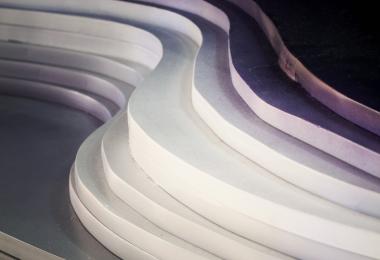
The Table of the Black Iris
Rasha Yaseen
Rasha designed a layered plywood table with metal legs inspired by the Black Iris. The table combines layered plywood and metal in an organic yet sculptural form.
Mentored by Suliman Innab.
© Amman Design Week 2017
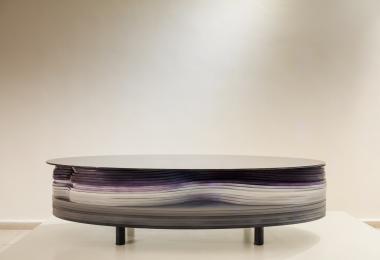
The Table of the Black Iris
Rasha Yaseen
Rasha designed a layered plywood table with metal legs inspired by the Black Iris. The table combines layered plywood and metal in an organic yet sculptural form.
Mentored by Suliman Innab.
© Amman Design Week 2017
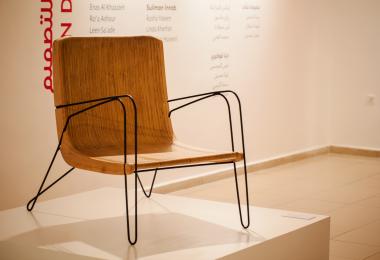
Ironwooden (Lounge Chair)
Munther Hussein
Munther designed a chair that maintains its structure without any screws or rods. The chair combines wood and metal in such a way that allows pieces to flow together seamlessly.
Mentored by Suliman Innab.
© Amman Design Week 2017
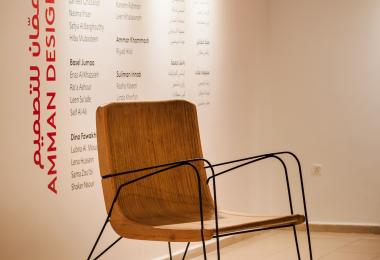
Ironwooden (Lounge Chair)
Munther Hussein
Munther designed a chair that maintains its structure without any screws or rods. The chair combines wood and metal in such a way that allows pieces to flow together seamlessly.
Mentored by Suliman Innab.
© Amman Design Week 2017
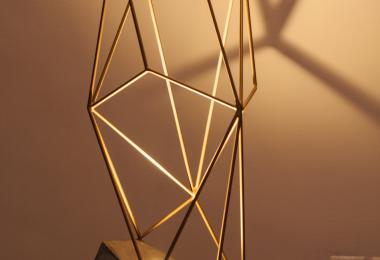
Umbra Light
Linda Kherfan
Inspired by natural materials and geometric forms, Linda designed a lamp that marries elements of brass and concrete, made to contrast with the warm light projected from the light at the base.
Mentored by Suliman Innab.
© Amman Design Week 2017
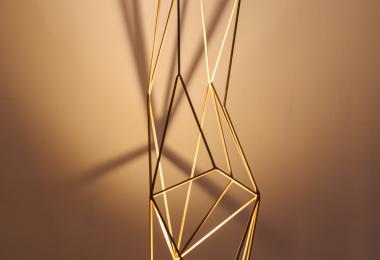
Umbra Light
Linda Kherfan
Inspired by natural materials and geometric forms, Linda designed a lamp that marries elements of brass and concrete, made to contrast with the warm light projected from the light at the base.
Mentored by Suliman Innab.
© Amman Design Week 2017
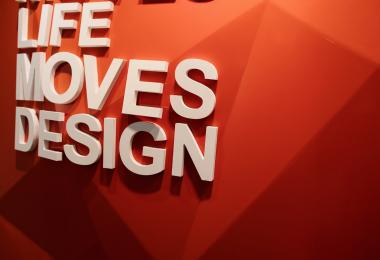
Design Moves Life Moves Design
Saif Al Ali
Saif designed a 3D poster from hardboard to fit Amman Design Week 2017’s slogan ‘Design Moves Life Moves Design’.
Mentored by Basel Jumaa.
© Amman Design Week 2017
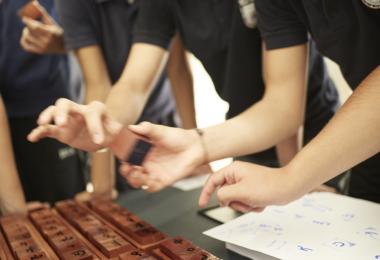
Zakhrafa
Ro’a Ashour
Ro’a designed an Arabic typeface that transformed traditional Arabic calligraphy into geometric and architectural forms.
Mentored by Basel Jumaa.
© Amman Design Week 2017
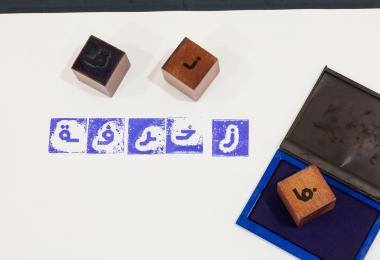
Zakhrafa
Ro’a Ashour
Ro’a designed an Arabic typeface that transformed traditional Arabic calligraphy into geometric and architectural forms.
Mentored by Basel Jumaa.
© Amman Design Week 2017
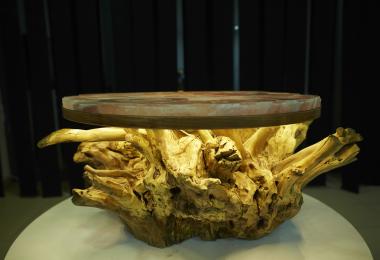
Into Happiness
Leen Sa’adeh
When designing this table, Leen was inspired by the beauty of natural elements, specifically by aged pink Himalayan salts, brought all the way from Pakistan, and olive wood from Ajloun.
To create this piece, the salt block has been curved and mounted onto an aged olive wood stem. The natural shape of the olive tree’s root, symbolizing peace, holds the Himalayan salt block, a material Leen used to symbolize Earth. The piece features handcarved writing in Diwani script, composing the Arabic word “Sa’adeh”, which means "happiness".
Leen also created a mounted lighting piece, utilizing the same Himalayan salts and carved wood.
Mentored by Basel Jumaa.
© Amman Design Week 2017
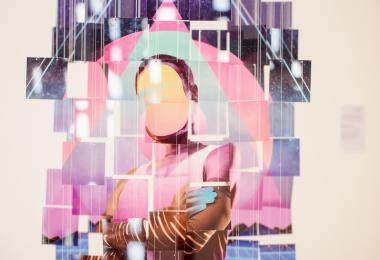
My Unlimited Universe
Enas Al Khazaleh
Enas’s multi-layered graphic depicts a futuristic representation of self; accomplishing goals, overcoming obstacles, and challenging common perception. The pixelation of the 70 plexiglas pieces creates a warped visual effect that references the age of technology.
Mentored by Basel Jumaa.
© Amman Design Week 2017

